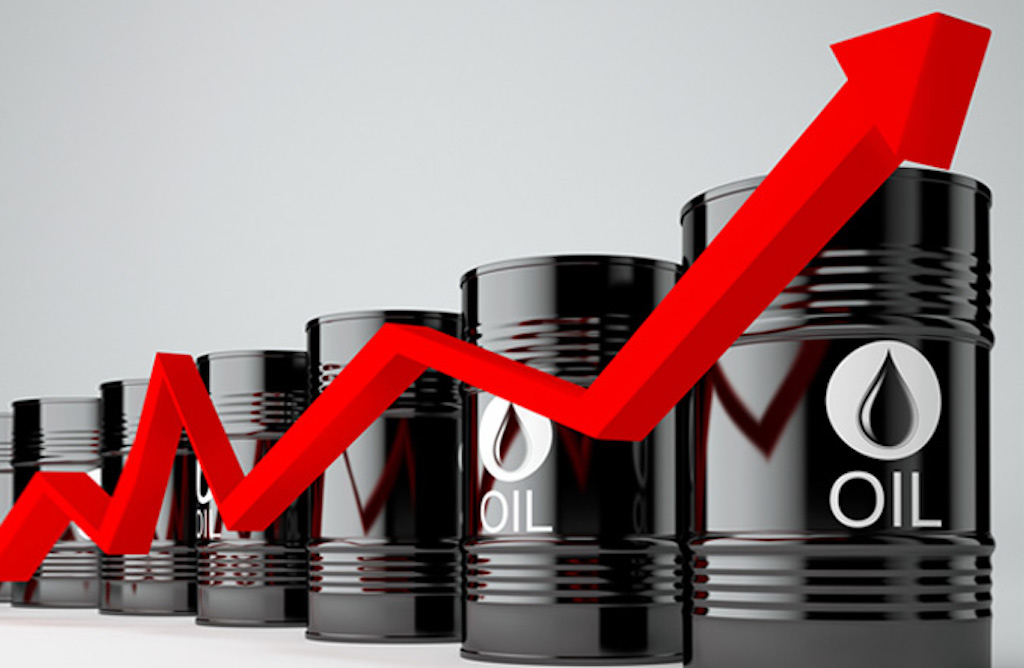Key Insights
- Oil prices have reached their highest levels of the year, with Brent crude trading at around $93.90 per barrel and WTI at $90.41.
- Saudi Arabia and Russia have extended their production cuts, leading to concerns of a significant supply deficit in the oil market.
- Analysts are divided on whether oil prices will surpass $100 per barrel.
Oil prices have surged to their highest levels for the year, rekindling hopes of a return to the elusive $100 per barrel mark. This surge has captured the attention of analysts who are now seriously considering the possibility of crude oil hitting the coveted triple-digit milestone before the year’s end.
As of this week, international benchmark Brent crude futures have been trading at approximately $93.90 per barrel in London, reflecting a 0.2% increase. Simultaneously, U.S.
West Texas Intermediate (WTI) futures have reached $90.41, marking a nearly 0.3% gain for the session. Both Brent and WTI recorded their highest levels of the year just the day before, capping off an impressive month-to-date performance that signals their third consecutive positive week.
What’s fueling this dramatic rally in oil prices?
The primary driving force is the mounting anticipation of a supply crunch. Saudi Arabia and Russia, two heavyweights in the global oil production landscape, have taken decisive steps to draw down global inventories and prolong their oil output reductions until the year’s end.
Saudi Arabia, the dominant force within OPEC (Organization of the Petroleum Exporting Countries), announced on September 5th that it would continue its production cut of 1 million barrels per day through the remainder of the year.
In a parallel move, Russia, a non-OPEC leader, committed to reducing its oil exports by 300,000 barrels per day for the same period.
Importantly, both countries have indicated their intention to reassess these voluntary cuts on a monthly basis, underscoring their commitment to stabilizing oil markets.
Will oil surpass $100 per barrel before 2024?
Analysts at Bank of America have voiced their belief that these supply cuts, coupled with Asia’s growing demand for oil, could propel Brent prices past the $100 per barrel mark before the year 2024.
This optimism is shared by others in the industry, including Tamas Varga of oil brokerage firm PVM. Varga asserts that a leap toward the $100 milestone is feasible due to production constraints in Saudi Arabia and Russia, upcoming refinery maintenance, a structural diesel shortage in Europe, and a growing consensus that the current cycle of tightening oil supplies will soon reach its conclusion.
However, this bullish sentiment comes with a caveat. Varga warns that such a price rally may usher in renewed inflationary pressures, a concern validated by this week’s U.S. inflation data and increased consumer spending.
These factors suggest that interest rates might remain elevated for an extended period, potentially exerting a negative impact on both economic growth and oil demand.
The International Energy Agency (IEA) has also weighed in on the matter, cautioning that Saudi Arabia and Russia’s production constraints could result in a “substantial market deficit” during the fourth quarter of the year.
The IEA’s monthly oil report highlights the offsetting effect of OPEC and non-OPEC members’ production curbs, which have collectively trimmed more than 2.5 million barrels per day from the global market since the year’s outset.
However, as September begins, the IEA anticipates that the loss of OPEC+ production, chiefly led by Saudi Arabia, will lead to a significant supply shortfall in the final quarter of the year.
Christyan Malek, Global Head of Energy Strategy and Head of EMEA Oil and Gas Equity Research at JPMorgan, offers his perspective, suggesting that oil prices are likely to fluctuate in the $80 to $100 range in the short term, settling around $80 over the long term.
According to Malek, these projections hinge on the evolution of China’s economic situation, U.S. actions, and how the shale industry responds. Notably, the United States appears to have limited options for driving down oil and gasoline prices ahead of a pivotal presidential election in the coming year.
Short-term pullback?
Despite these bullish views, not everyone is convinced that oil prices are destined for an immediate return to the $100 threshold.
Ole Hansen, Head of Commodity Strategy at Saxo Bank, contends that the crude oil sector appears overbought in the short term and may be due for a pullback. He doesn’t completely rule out the possibility of Brent briefly trading above $90 but emphasizes that technical indicators suggest the need for support at $89, failure of which could trigger a decline toward $87.5.
Read also! Brent Oil Prices Unlikely to Fall Below $70, Citigroup Predicts
Nonetheless, he notes that the medium-term uptrend remains strong, with trendline support near $85, potentially marking the lower boundary of a new, higher range supported by OPEC’s active management of supply.

